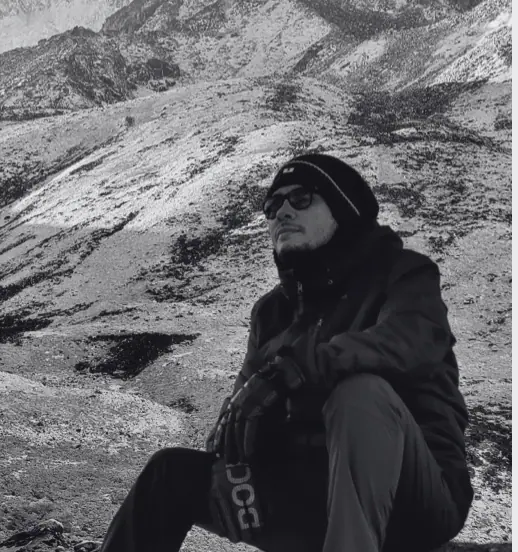Picture this: you’re watching a young girl receive her first riding lesson, her face lighting up as she gently pats her horse’s neck. Yet somewhere across the world, another horse stands in a cramped stall, its spirit broken by harsh training methods. The truth is, the question of whether horse riding is cruel doesn’t have a simple yes or no answer.
The relationship between humans and horses spans thousands of years, built on partnership, trust, and mutual respect. Today, as animal welfare concerns take center stage, we’re asking tougher questions about our equine companions. Veterinarians, the very people dedicated to protecting animal health and wellbeing, find themselves at the heart of this complex debate. Their insights reveal a nuanced picture that goes far beyond black-and-white judgments.
The Veterinary Perspective on Horse Riding Ethics

Veterinarians have a key role in providing medical care for sports horses during and between competitions, but the standard client:veterinarian relationship that exists in companion and production animal medicine is distorted by the involvement of third parties in sports medicine, resulting in distinct ethical dilemmas. These professionals face daily conflicts between their oath to protect animals and the pressures of competitive sports.
The conflicting interests, responsibilities or opinions of the veterinary surgeon, trainer and owner was the most commonly cited challenge. Dr. Sarah Mitchell, an equine veterinarian with over fifteen years of experience, s how she often finds herself caught between what’s best for the horse and what clients want to hear. When a horse shows signs of discomfort, owners may push for treatments that allow continued riding rather than the rest the animal truly needs.
Because equine welfare is not purely an empirical matter, we must recognize that science alone may not be enough when assessing equine treatment. The science community must realize, as does the public already, that different value assumptions will lead to different welfare emphases. This reality forces veterinarians to navigate between objective medical findings and subjective ethical considerations.
When Riding Becomes Harmful: Physical Signs Horses Can’t Hide

Horses that are experiencing pain will show signs of their discomfort such as limping, bucking, and agitation. These obvious distress signals represent just the tip of the iceberg when it comes to equine suffering during riding activities. Modern research has uncovered subtle behavioral indicators that many riders miss or ignore entirely.
It was proposed that if more than 8 of the 24 behaviors are observed, the horse is affected by some kind of pain, although some lame horses obtained significantly lower scores. The Ridden Horse Pain Ethogram has revolutionized how veterinarians assess discomfort in working horses. Signs include excessive tail swishing, tension in facial muscles, resistance to the bit, and irregular gait patterns.
Behaviours exhibited by many riding school horses are likely to reflect chronic discomfort and should not be regarded as typical behaviour of pain-free horses. Education of owners, riders, trainers and all associated professionals is required about what constitutes abnormal horse behaviour.
Unfortunately, many equestrians have become so accustomed to seeing stressed behaviors that they consider them normal. A horse that pins its ears, tosses its head, or shows resistance isn’t being “difficult” – it’s communicating distress in the only way it knows how.
The Weight of the Matter: Understanding Physical Limits

Most riders say that a horse should carry a rider no more than 20% of their weight. So, if a horse weighs 1200 pounds, a rider should be 240 pounds or less to avoid discomfort. This guideline represents more than just a number – it’s about respecting the biomechanical limits of the equine body.
The spine of a horse isn’t naturally designed to carry weight on its back. While horses can adapt to reasonable loads, exceeding these limits creates unnecessary strain on joints, muscles, and ligaments. Veterinarians regularly see the long-term consequences: arthritis, muscle atrophy, and chronic back pain that significantly impacts quality of life.
Weight distribution matters as much as total weight. An unbalanced rider, regardless of their size, can cause a horse to compensate by altering its natural movement patterns. These compensations often lead to secondary injuries that compound the original problem, creating a cycle of discomfort that’s difficult to break.
The Psychology of Equine Stress and Fear

Stress in horses can greatly increase the risk of injury. A stressed horse can be unpredictable and dangerous to those around him and to himself. Natural instincts will take over and the horse will run away, often reacting in an unreasonable manner. The mental wellbeing of horses during riding activities often receives less attention than physical health, yet psychological stress can be equally damaging.
As athletes and companions, our patients are often placed under low levels of continuous stress, in anticipation of being restrained, having an ill-fitting saddle placed on their backs, having a harsh bit in their mouths with harsh or inexperienced hands in control, being kicked or subject to spurs or a whip. Their daily lives are filled with small, bearable nociceptive events which, when added together, can result in anxiety.
Compliance during a stressful or painful handling experience is not always a reliable indicator of a horse’s underlying affect, physiological state, or level of physical discomfort but may instead reflect its training history. Many horses learn to suppress their natural responses to avoid punishment, creating an illusion of contentment while suffering internally.
Training Methods That Cross the Line

Ferrill, Watts’ attorney, argued that there was no established standard of care in veterinary medicine for using a hot shot on horses and that Watts, an equine specialist, used her best judgment. Recent legal cases have exposed extreme examples of abuse in professional equine training, but problematic methods exist on a spectrum that extends into everyday riding practices.
The same participant described competitors employing veterinarians to cut the nerves in their horse’s tail, so the horse can no longer swish or swing their tail. Tail swishing or swinging is undesirable for a show horse and would diminish a competitor’s chance of winning. Such procedures prioritize competition success over animal welfare, turning veterinarians into unwilling participants in cosmetic procedures that prevent horses from expressing natural behaviors.
Force-based training methods create learned helplessness rather than genuine cooperation. Training methods that do not align with the horse’s natural learning abilities reduce the likelihood of optimal performance and increase the frequency of problem behaviours as well as jeopardising equine welfare. Detection of inappropriate training practices is an essential part of the veterinarian’s role.
The Role of Equipment in Horse Welfare

Equestrian equipment is often used to maintain control of horses while riding, training or handling them and therefore to optimize human and horse safety. However, equipment that has been incorrectly selected or inappropriately used may result in horses exhibiting conflict-related behavior. The tools we use to communicate with horses can either facilitate partnership or cause suffering, depending on their design and application.
Poorly fitting saddles create pressure points that can lead to muscle atrophy, nerve damage, and behavioral problems. Horses must be saddled correctly with ride gear to make sure they do not suffer injuries, rashes or, sores. Regular saddle fitting by qualified professionals isn’t just about comfort – it’s a welfare necessity that many horse owners overlook.
Bits, spurs, and whips become instruments of abuse when used with excessive force or poor timing. Veterinarians frequently treat injuries caused by harsh equipment use: bit-related mouth trauma, spur marks, and psychological damage from fear-based handling. The key lies not in avoiding these tools entirely, but in understanding their proper application and recognizing when their use becomes counterproductive.
Finding the Middle Ground: Ethical Riding Practices

Riding horses may be considered cruel by some, but for many experienced equestrians, horseback riding is a positive experience for both them and their horses. If riders really know what they are doing and put their horse’s needs first, then riding horses is not cruel. The distinction between ethical and unethical riding lies primarily in education, awareness, and prioritizing the horse’s wellbeing over human goals.
The truth is, if a horse really did not want a rider on its back, it could throw him or her off with ease. With the right education, experience, and care, riders can help keep horseback riding safe and enjoyable for themselves and their horses. This voluntary participation suggests that horses can find riding acceptable when conditions are appropriate.
Ethical riding requires ongoing education about equine behavior, proper conditioning programs, regular veterinary care, and the wisdom to recognize when a horse needs rest or retirement. It means choosing the horse’s long-term health over short-term competitive success, and developing the skill to read subtle signs of discomfort that less experienced eyes might miss.
The path forward isn’t about eliminating horse riding, but about elevating standards. When done with knowledge, compassion, and respect for the horse as a sentient being with its own needs and limitations, riding can represent a positive partnership rather than exploitation. The veterinary community continues to provide the scientific foundation for these improved practices, helping bridge the gap between tradition and modern animal welfare understanding.
What do you think about finding this balance between human enjoyment and horse welfare? The conversation is far from over, and every rider’s commitment to learning and improving makes a difference in the lives of these remarkable animals.

Andrew Alpin from India is the Brand Manager of Doggo digest. Andrew is an experienced content specialist and social media manager with a passion for writing. His forte includes health and wellness, Travel, Animals, and Nature. A nature nomad, Andrew is obsessed with mountains and loves high-altitude trekking. He has been on several Himalayan treks in India including the Everest Base Camp in Nepal.






